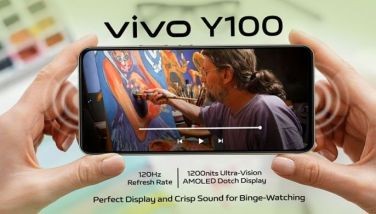Nearing 40? Get checked for AMD
MANILA, Philippines - “Every year, many Filipinos go blind because of AMD. Many do not notice the symptoms in the early stages of the disease until eye damage becomes so severe and impossible to repair,” says Dr. Narciso Atienza, consultant ophthalmologist at the Cardinal Santos Medical Center (CSMC). “That’s why I always tell my patients, 40 years and above, to have at least an annual eye checkup because this is the age when AMD and other eye diseases are commonly diagnosed.”
AMD stands for age-related macular degeneration, one of the leading causes of blindness in the Philippines. It involves the loss of a person’s central field of vision and occurs when the macular (or central) retina develops degenerative lesions. The incidence of AMD in the Philippines is increasing due to lack of awareness, climate change, poor lifestyle, and diet. Patients nearing the age of 50 and above are at most risk for AMD.
“Blurry central vision signals the start of AMD while seeing bent lines means the disease is in mid-stage,” explains Dr. Atienza. ”Once AMD worsens, it is irreversible. That’s why prevention is always the best option.”
Quitting smoking tops the AMD prevention list. “Smoking doesn’t just affect the lungs, heart, and other vital organs, but the eyes as well,” Dr. Atienza stresses. Research has established a direct relation between smoking and AMD. Tobacco hampers the absorption of lutein, an antioxidant that plays a major role in protecting the retina from ultraviolet rays.
Controlling high blood pressure is also vital. “Hypertension can damage small blood vessels in the eye, which can lead to AMD,” Dr. Atienza points out.
The good doctor prescribes: Avoid cholesterol-rich foods and opt instead for green leafy vegetables, fruits and fish, which are rich in vitamin A and antioxidants. Wearing ultraviolet rays-resistant sunglasses when outdoors can lower your risk for AMD. Nutritional supplements prescribed by a doctor can be helpful for middle-aged people and those with a family history of AMD.
“AMD is preventable when detected early, so have your eyes checked at least once a year, especially if you’re 40 and above,” stresses Dr. Atienza.
Patient safety is an overriding priority for CSMC, according to Dr. Atienza. That’s why the medical center’s ophthalmology department never prescribes injectable drugs that have not received regulatory approval for the treatment of “wet” AMD. Such drugs have the potential to affect other parts of the body and may put the patient at risk of stroke and even death. “We only prescribe ophthalmic drugs that have been approved by the FDA and other regulatory agencies. Regulatory approval guarantees a drug’s efficacy and safety.”
Ranibizumab is a breakthrough injectable drug designed to stop the growth of new blood vessels that damage the macula. Developed by research-based healthcare company Novartis, ranibizumab is the first US FDA-approved and only drug clinically proven to improve vision and vision-related quality of life. Ranibizumab, a prescription drug for wet AMD, was approved by BFAD in 2007.



















